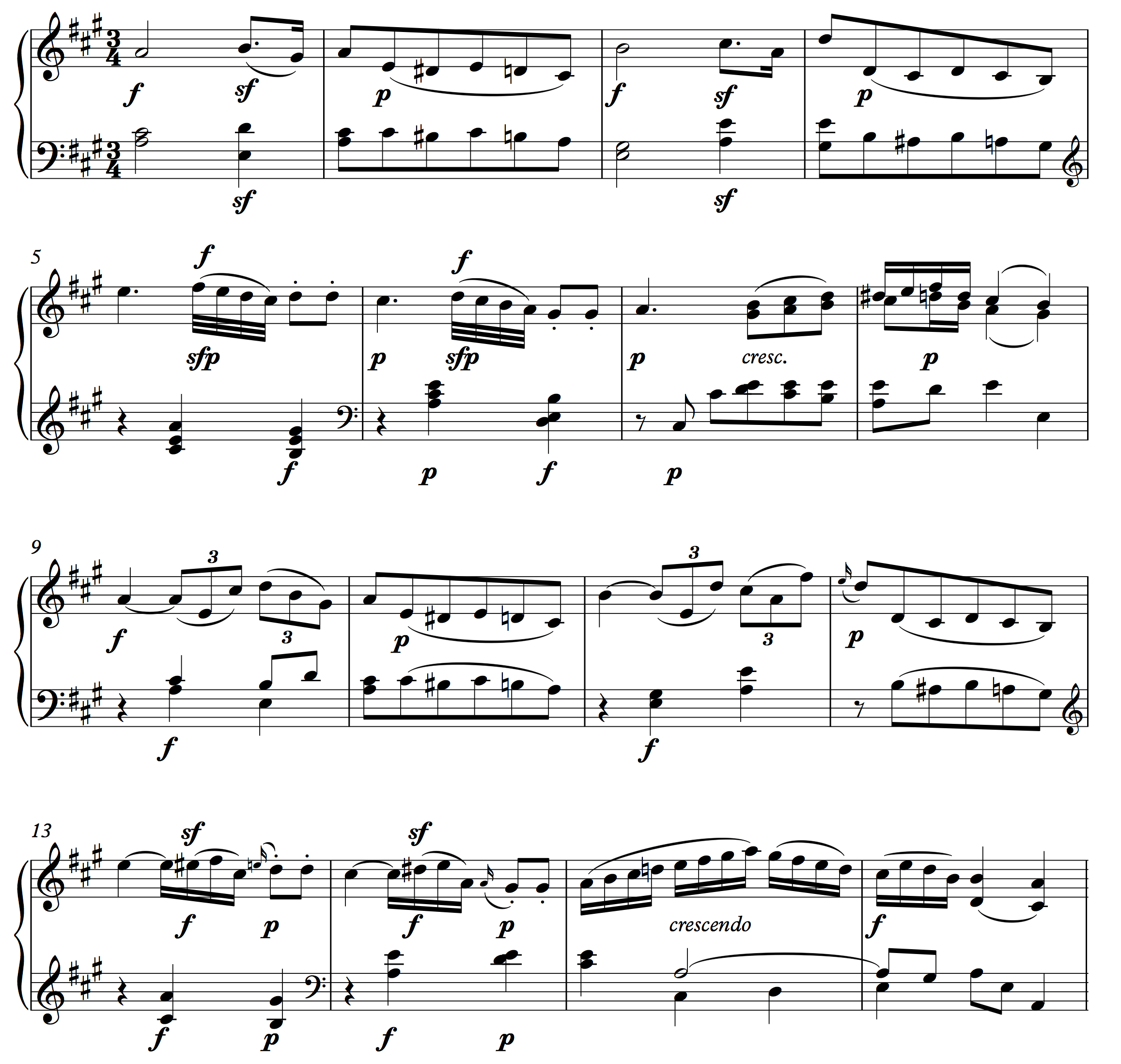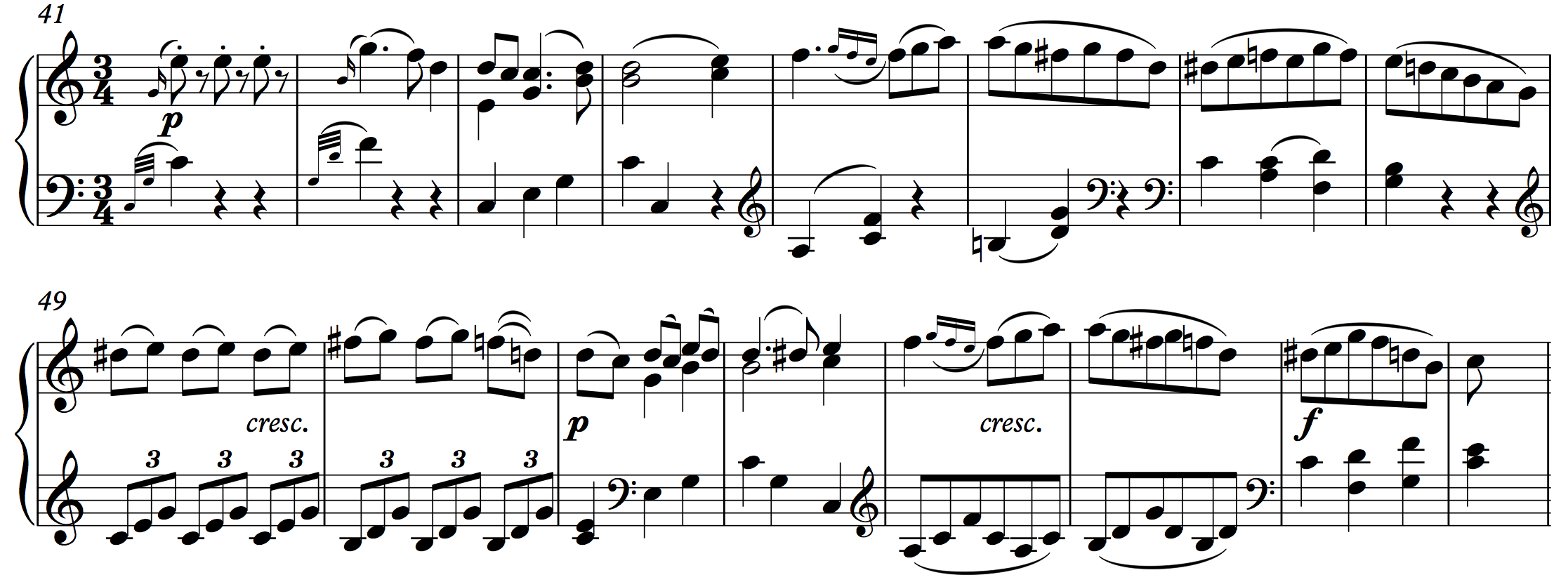Compound period
The compound period (also called the 16-bar period because its typical form is 16 bars long) is made of two themes instead of two phrases. Like an 8-bar period, the two halves of the compound period exhibit antecedent and consequent function. To distinguish them, we will call these “large antecedents” and “large consequents.”
The thematic types available to the two halves of the compound period must be conducive to the functions of antecedent and consequent. Thus,
- the initiating phrase of the large antecedent, usually four bars long, will act as a basic idea - either presentation, antecedent, or compound basic idea;
- the concluding half, also typically four bars long, will act as a contrasting idea and will always be a continuation;
- the large consequent should return the BI from the first theme (often varied), and its concluding CI will end with a strong cadence.
These functional requirements tend to result in three types of compound period.
A Compound Period Comprised of Two Sentences
Both sentences in the compound period will have the same basic idea, each exhibiting presentation function. In the first sentence, the presentation is followed by a continuation that ends with a weak cadence. In the second, the continuation culminates in a strong cadence, most commonly a PAC.

The large antecedent is constructed as a sentence whose basic idea is a presentation and whose contrasting idea is a continuation. Following the HC in m. 8, the next phrase restates the presentational basic idea in varied form. The final four measures culminate in a PAC.
A Compound Period Comprised of Two Hybrids
If the initiating phrase is composed of an antecedent, rather than a presentation, the 8-bar antecedent phrase will be a hybrid of the “antecedent + continuation” variety.

In this example the large antecedent begins with a small antecedent, comprising mm. 41-44, that acts as a basic idea. In the large consequent, this basic idea returns (mm. 49-52) in varied form.
By contrast, if the initiating phrase is composed of a “compound basic idea”, the large antecedent will be a type-3 hybrid: compound basic idea + continuation. This type of compound period is very similar to the previous variety. The only distinction is that the initiating phrase will not culminate in a cadence, thus giving the theme’s initiation a looser quality.